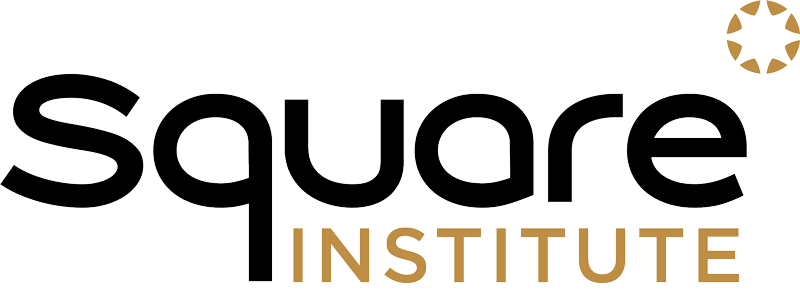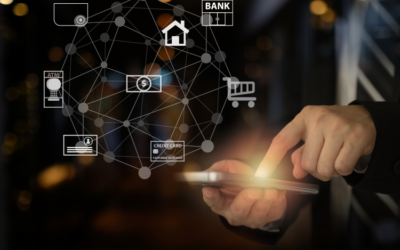
Agefi Luxembourg
– le 19 janvier 2022
Behavioral finance at a glance
Behavioral finance attempts to understand and explain observed investor and market behaviors. This differs from traditional finance, which is based on hypotheses about how investors and markets should behave. In other words, behavioral finance is founded on practical analysis of the market participants’ behaviours, in contrast to traditional finance which is based on theoretical approaches.
Behavioural finance studies individuals’ reactions as well as financial decisions then highlights the human errors committed under different circumstances. It classifies those errors, depending on their cause or source, as cognitive errors or emotional biases. More specifically, cognitive errors are information-processing that cause the decision to deviate from the rational decisions that are described in traditional finance. On the other hand, emotional biases arise naturally as a result of reactions and feelings that can cause the decision to diverge from the rational decisions of traditional finance.
In simple words, cognitive errors are due to an illogical reasoning, while emotional biases are caused by feelings drifting our decision-making process towards the wrong direction.
To sum up, behavioural finance is a more practical and reasonable way of analysing the markets than traditional finance. However, the latter attempts to explain investors’ behaviours in an ideal world, in contrast to behavioural finance that examines the market movements while taking into consideration the human factors that impact investment decisions.
For that reason, under extraordinary circumstances, such as market booms/recessions, behavioural finance has a very important role to play in order to understand market movements, considering the fact that investors are highly influenced by the excitement, optimism, fear and/or uncertainty factor that will most likely push them towards biased decisions.
Hence the utility of developing a good understanding of biases affecting our decision-making process, especially now, as we are still facing uncertainties due to the COVID-19 pandemic.
Detection of Behavioural Biases & Guidelines to Overcome Them
Ten years after the end of the global financial crisis, the Coronavirus pandemic caught the world by surprise. While the 2008 crisis can be explained as the consequence of developments in the housing and mortgages industry, the COVID-19 crisis was absolutely unexpected.
Undeniably, we all have seen pictures of people standing in long lines waiting to enter grocery stores, others abandoning their pets, and others fighting over toilet paper. In fact, these reactions are simply normal human reactions, because we are not computer-like, we have thoughts and emotions that impact our behaviour. Human-beings are susceptible to react in an irrational manner whenever confronted to a danger or any unusual situation. The fear of the unknown drives us to behave based on our instincts rather than a logical reasoning. We are very often driven by our emotions, feelings and expectations.
For this reason, the more we understand the causes of our reactions, the more we have control over them. Thus, we will examine some examples of biases defined by behavioural finance, analyze how they can be the reason behind common reactions to COVID-19 news and how we can overcome them.
- Representativeness bias
Representativeness bias is a cognitive error bias in which people tend to classify new information based on past experiences and classifications. They believe their classifications are appropriate and place unjustified weight on them. This bias occurs when people attempt to draw conclusions from their experiences, and tend to classify new information accordingly. When confronted with new information, they use those categories even if the new information does not necessarily fit. They rely on a “best fit” approximation to determine which category should provide a frame of reference from which to understand the new information.
As we recall, in March 2009, the Dow Jones Industrial Average and the S&P 500 closed at their lowest levels of the Great Recession. Eleven years later, as Covid-19 hit the world, some investors compared the pandemic to March 2009 when stock markets bottomed, and decided to buy stocks. As the prices began to decline, some investors – feeling particularly sure that this was the smart decision – started buying very early. But what made them so sure? How would they know that this event was similar to March 2009 and not possibly similar to October 1929, when the stock market only bottomed in 1932? Could this simply be not similar to any historical event, yet something new?
The point is, several investors drew conclusions based on the past experiences, hence revealing the representativeness bias’s characteristics. To avoid such a behaviour, we should carefully consider all possible scenarios before taking any investment decision. The focus should be on analysing the present without attempting to classify it with a past event.
- Framing bias
Framing bias is an information-processing bias in which a person answers a question differently based on the way in which it is asked/framed. A decision frame is the decision maker’s subjective perception of the acts, outcomes, and possibilities associated with a particular choice. The frame that a decision maker adopts is controlled partly by the formulation of the problematic and partly by the personality and characteristics of the decision maker.
We have seen that many market participants decided to sell their stocks as a reaction to the announcement of a global pandemic, as they believed that bad news about the Covid-19 would continue to depress stock prices. The error committed here is that they forgot to ask themselves the following questions : Who would buy those stocks? Who would be the counterparty of these trades?
Instead, they traded stocks as one would play tennis against a practice wall. When playing tennis against a practice wall, you can see where the ball hits the wall, so you can place yourself perfectly to hit it back. But in reality, trading is like real tennis with an opponent on the other side of the let. For this reason, it is really important to frame questions correctly. Analogies are a brilliant framing device, tennis is a good analogy, but we have to do it right, realizing that it is a game against another person on the other side of the court.
- Overconfidence
Overconfidence is a key emotional bias relevant to market participants. This bias is an error in which people reveal unjustified faith in their own intuitive reasoning, judgments, and analytical skills. This overconfidence may be the result of overestimating knowledge levels, and abilities, which leads to wrong investment decisions.
Investors believe that by acquiring information, they can know more than others and obtain an edge. Hence, during the pandemic people spent long hours reading or watching the news on a daily basis to get the most recent updates on the number of affected people, the vaccine evolution, and new policies, in order to collect the highest amount of information possible and adjust their portfolios accordingly.
By doing so, investors are certain that by collecting additional information, they will become knowledgeable and thus more accurate in their forecasts compared with others. As a result, they may collect too much information which in fact does not increase the accuracy of a forecast, but instead reinforces the investors’ confidence in their analysis and decisions.
In order to avoid this bias, investors should be aware of the fact that too much information will end up creating noise instead of adding value to their projections. Being exposed to unnecessary news, will cause confusion and may drive someone to take more investment actions than needed. The remedy to this would be to reduce the noise by limiting the time spent following the news, which will cut the number of decisions and actions taken.
- Regret-aversion bias
Regret-aversion is an emotional bias in which people tend to avoid making decisions that will result in an action, out of fear that the decision will turn out poorly.
Obviously, this bias remarkably affected investment decisions on the announcement of a global Pandemic. Indeed, numerous investors rushed to sell their portfolios to limit their losses in the fear of suffering greater losses later on, and regretting holding their assets for too long.
In fact, having experienced losses, our instincts tell us that to continue investing is not prudent. Yet, periods of depressed prices may present great buying opportunities. Regret aversion can persuade us to stay out of the stock market just when the time is right for investing.
A good solution to overcome the regret-aversion bias would be to keep in mind that losses are inevitable, and it is radical to focus on the long-term perspective of the expected returns instead of emphasizing on short term potential losses. Moreover, applying the golden rule of not putting our eggs in one basket, is indeed crucial to reduce risk and minimise losses.
Conclusion
The events surrounding the COVID-19 crisis have uncovered big gaps in knowledge. Pandemics have direct and severe implications to many areas of economics and most prominently, the very pertinent trade-offs between health and the economy that might be part of various decisions made by policy makers in developing mitigation policies.
Nevertheless, all market participants, even those with significant knowledge and experience in finance, may exhibit behavioral biases. In fact, the more knowledgeable one becomes, the more they are prone to overconfidence bias. Therefore, awareness of these behavioural biases and their potential influences can help us put in place measures to reduce their effect.
To conclude, the three golden rules for a better risk-return management of our portfolios under extraordinary situations are:
- Reduce the noise, get exposed to the right amount of information.
- Assess the risk-return profile based on a long-term perspective rather than on the short-term reaction over daily movements.
- Remember that the past does not necessarily explain the present nor the future, thus never rush into drawing conclusions based on history or previous experiences.
Furthermore, it is needless to say that diversification is the all-time number one rule, to reduce risk and hence reduce the level of stress specially during bear markets.
Last but not least, keep in mind that perspective is everything. Asking ourselves the right questions and seeing things from the other side, is likely to be most effective solution to potentially alter the decision-making process and overcome several behavioural biases.
Par Carla Sayah, consultante Square.
AUTRES ACTUALITÉS EN RISK & FINANCE
Banque à réseau versus banque à zéro : qui écrira l’histoire ?
Paru dans Les Echos
EUDIW : enjeux et conséquences du portefeuille d’identité numérique de l’UE sur le secteur bancaire
Paru dans Le Journal Du Net
L’inclusion financière, un levier pour les banques
Paru dans Revue Banque




